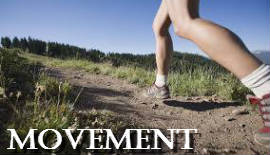We are currently living in a sedentary society, where much work and entertainment is conducted in front of a computer or television screen. The problem with this sedentary lifestyle is that our bodies are not designed for it. The human body still believes it is in the time of the hunter/gatherer and should be moving.
Many of us are aware that we should be exercising to build our muscles and strengthen our hearts and lungs, and that physical activity can provide other health benefits like lowering your blood pressure and blood sugar.
However, research has also shown that not only should we be moving for the health of our body, we should be moving for the health of our minds. Exercise increases the amounts of beneficial neurotransmitters in our brains that can improve anxiety and depression, and it builds connections between brain cells that improve memory and learning, and may also reduce the effects of Alzheimer’s. Exercise also improves our brain’s ability to handle stress and improves attention in those with ADHD.
It is generally recommended that adults should exercise for a minimum of 30 minutes, 5 times a week. If you are new to exercising check out this page from Exercise is Medicine with some tips for starting an exercise plan.
 If you are just getting started, walking in your neighborhood, local park, or local trails is a great way to get moving. Track your time, distance, and route on this walking/running log to keep track of your progress.
If you are just getting started, walking in your neighborhood, local park, or local trails is a great way to get moving. Track your time, distance, and route on this walking/running log to keep track of your progress.
Some beginner tips include:
– Wear shoes that are comfortable.
– Bring water to stay hydrated.
– Start off slow and gradually increase your pace.
– Take quicker steps to burn more calories instead of longer steps.
– Find a walking partner so you can challenge and motivate each other.


 Click picture above to download your own Nature Prescription
Click picture above to download your own Nature Prescription






